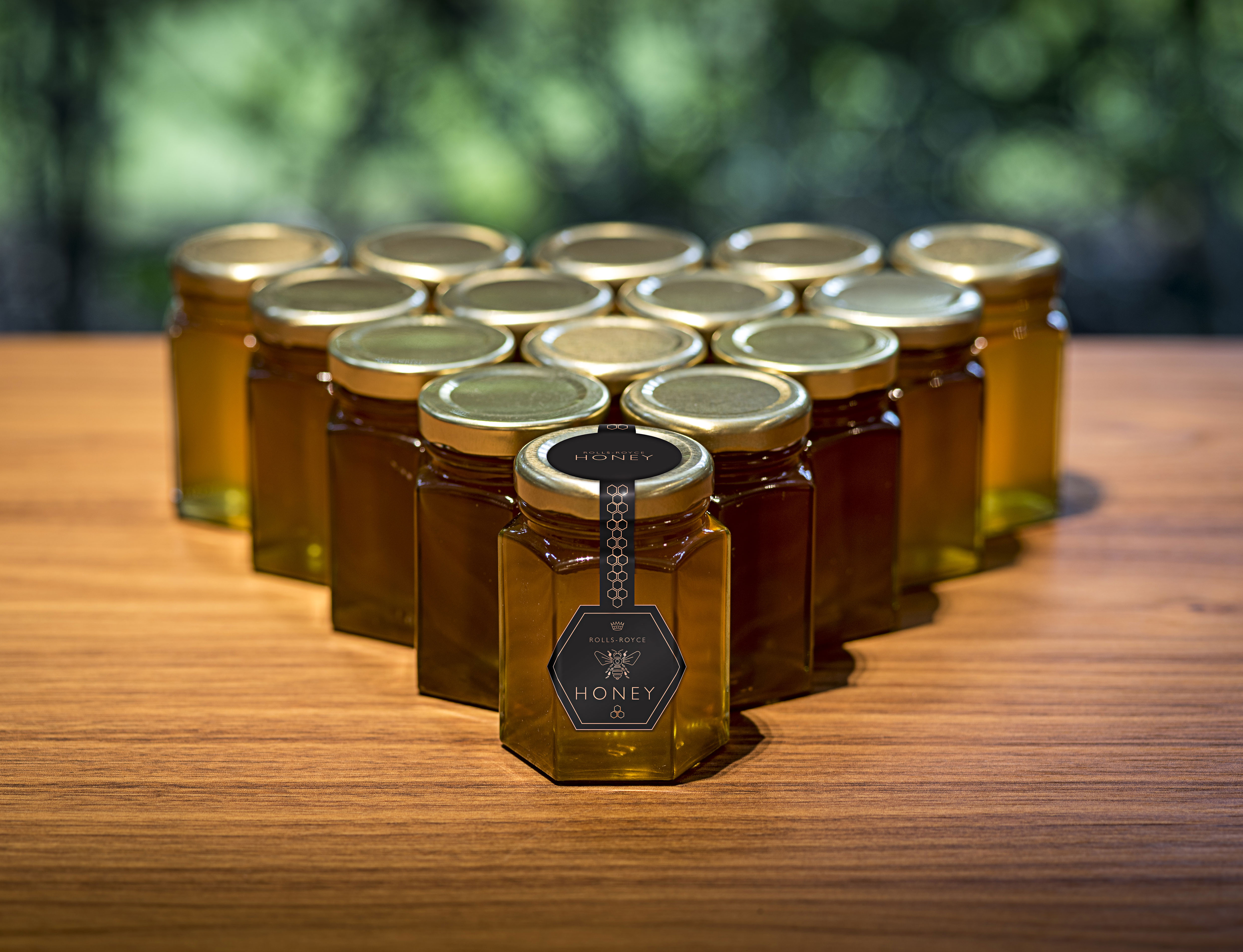Busy bees at work in the home of Rolls-Royce
There's been record production from the apiary, consisting of six hives, at the home of Rolls-Royce in Goodwood
 Rolls-Royce honey
Rolls-Royce honeyAlthough car manufacturing has been temporarily suspended, production of another coveted treasure is running at record levels at the home of Rolls-Royce: the world’s most exclusive honey. In their third full season of production, the dedicated 2,50,000-strong workforce in the company’s apiary are set, once again, to exceed their 2020 volume targets for the ‘Rolls-Royce of Honey’.
Having come through the winter in excellent health, Rolls-Royce’s honeybees are currently emerging from their hives and foraging on the half-a-million trees, shrubs and wildflowers flourishing across the 42-acre Rolls‑Royce site, plus the eight acres of sedum plants growing on the manufacturing plant’s ‘living roof’ – the largest of its kind in the UK. The more adventurous bees make sorties into the surrounding Goodwood Estate, whose 12,000 acres of west Sussex countryside are among the glories of the South Downs National Park.
 Rolls-Royce Apiary, Goodwood
Rolls-Royce Apiary, GoodwoodSo where does the Rolls Royce of honey come from?
Established in 2017, the Goodwood Apiary comprises six wooden beehives, each bearing a polished stainless steel nameplate handcrafted in the company’s bespoke workshop. Five are named after cars in the Rolls-Royce product family – ‘Phantom’, ‘Wraith’, ‘Ghost’, ‘Dawn’ and ‘Cullinan’ – while the sixth, the ‘Spirit of Ecstasy’, celebrates the marque’s illustrious mascot.
 Close-up of the beehives at the Rolls-Royce apiary, Goodwood
Close-up of the beehives at the Rolls-Royce apiary, GoodwoodLike the 2,000 employees at the home of Rolls-Royce, the bees are responsible for producing a rare and desirable product. At the end of each season, The Rolls-Royce of honey is meticulously hand‑processed by local specialists and served to guests of the marque, including customers commissioning their motor cars in the company’s Atelier suite.
The Apiary project is Rolls-Royce Motor Cars’ response to the real and present threat facing Britain’s honeybee population. Honeybees are the principal pollinators of numerous tree and plant species, including many fruit and vegetable crops crucial to the local agricultural economy around the home of Rolls-Royce. Thus far, a shortage of suitable forage, due to habitat loss, has put their numbers under great and growing pressure in recent years, something which the recent coronavirus lockdown may be able to remedy, at least partially. To that end, residents and businesses within the National Park boundaries are also being encouraged to get involved through initiatives such as planting wildflowers in private gardens and estate grounds.
 Beekeepers at the Rolls-Royce Apiary, Goodwood
Beekeepers at the Rolls-Royce Apiary, Goodwood“The Apiary further underlines our commitment to the environment, which informs everything we do at Goodwood,” says Richard Carter, director, global communications, Rolls-Royce Motor Cars.
“Our sustainable buildings, thermal ponds, rainwater management systems and wildfowl refuge have already made the Home of Rolls-Royce at Goodwood one of the UK’s most eco-friendly manufacturing facilities. Through this project, tapping into the biodiversity of our site, including our huge living roof, we’re making an important contribution to conserving Britain’s vital bee population.”
Stay tuned to evo India for more fun content on all our social pages like Facebook , Twitter and Instagram.


